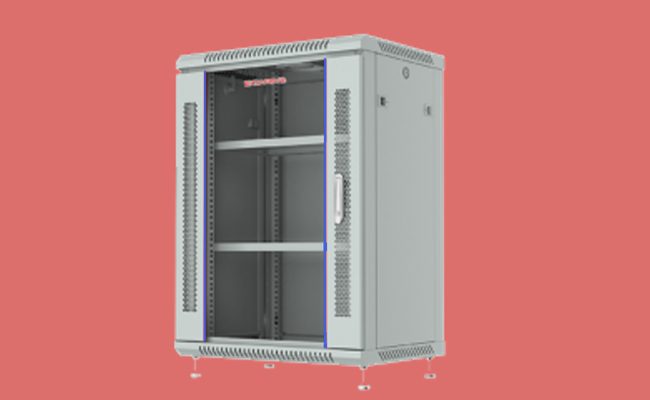
A set of high-precision hardware stands as the “brain” of any computer system, business, or enterprise. Nowadays, IT systems stand behind any process or calculation. However, what is a network system? It is a set of hardware components (computers, switchers, servers, other active equipment, and accessories), which work together as a single unit to solve tasks, process large volumes of data, and generate complicated calculations. This is why network systems are called the “brains” of businesses.
Can you imagine the size of such a system? Large processing systems can comprise hundreds of active and passive devices, which occupy much area. Modern manufacturers offer compact and highly functional solutions to accommodate network hardware. These are server racks and cabinets.
Pros of Server Furniture
The role of server furniture is difficult to overestimate. Nowadays, it is used in any sphere of activity. No business can act without network systems. The key advantages include:
- Durable metal bodies allow for reliable fastening of equipment and storage for a long time. Hardware is protected by side walls and doors.
- Space ergonomics. Server furniture is multi-level, which means that lots of components can be accommodated in a limited space.
- Easy access. Racks have no side panels or have removable walls, which simplifies maintenance and access to devices from all sides.
- Specialized tech holes. Fans are required to cool down devices. Manufacturers produce server enclosures equipped with tech slots for accessory installation and cable wiring. Thus, users have all the needed holes for mounting.
- Ease of assembly. Constructions are easily assembled and disassembled in half an hour.
- Many models are equipped with casters and handle for transportation.
- Different mounting possibilities. It is possible to fasten cabinets to walls or install them on the floor.
Diverse models are offered on the market. If you need a wall-mount server cabinet, visit the Sysracks website. Here, a wide catalog of models is represented. Skilled managers help select suitable products for any system size, place of installation, and demand.
According to the type of installation, server furniture falls into wall-mount and floor products. Let’s have a deeper look at each category.
Wall-Mount Models
A wall-mounted rack is a compact product designed for fastening to vertical surfaces. Furniture enclosures are made of durable metal and equipped with holes for fastening to walls. High-load fasteners are used for mounting.
Benefits of Wall Models
Hung racks feature the following:
- Space saving. By mounting server cabinets to walls, technicians save floor space and increase room ergonomics.
- 100% security. Wall models usually have solid enclosures, which prevents hardware from intentional and unintentional damage, and unauthorized access.
- Cooling options. Fans are installed in cabinets to maintain an optimal temperature level.
- Compact solutions for home offices. If you plan to arrange a home office, you don’t need a big cabinet. A small wall model is ideal.
Due to the specifics of installation, the carrying capacity of such models is limited. They are suitable for small systems and compact rooms with limited space. Furniture is widely popular for installation in public spaces (stores, banks, hospitals, etc.) to prevent damage and access.
Floor-Standing Models
A floor-standing rack is a big spacious metal construction. Its capability allows for accommodating hundreds or even a thousand devices. Here, manufacturers distinguish between open-frame and enclosed products. Open-frame pieces can have 2- or 4-posts.
Advantages of Floor Racks
Floor furniture has the following features:
- More space for hardware accommodation. Thus, such racks are better for big systems.
- Furniture is usually equipped with casters for portability and easier relocation.
- Diverse cooling strategies. Here, hot/cold aisles, fans, and sensors are applied.
- Easier maintenance. The staff can easily reach any device without the need to use a ladder.
- Some racks allow for adjusting depth by sliding the rear side of furniture.
Such models have found wide application in closed premises (large specialized data centers and server rooms). However, due to a wide range of models (from small 4U 2-upright racks to 48U cabinets), it is possible to pick a suitable model for any room.
Floor-Standing VS Wall-Mount Racks
Both categories of furniture differ in the type of installation. Thus, let’s compare both classes according to the following parameters:
- size;
- accommodating capacity;
- security;
- cooling strategies;
- ease of maintenance;
- cable routing;
- the place of installation.
Wall-mount products are more compact; their size is smaller. Floor-standing options are large. While the size of wall furniture ranges from 2U up to 8U (12U maximum), a standard floor model size is around 24U. The maximum size reaches 48U.
The maximum carrying weight is limited for wall products, while floor racks can carry 10x-20x time more.
Both models perfectly secure equipment from damage and unauthorized access. They have reinforced side panels, lockable doors, and latches.
Products from both categories have slots for fan and sensor installation, perforated panels, and other slots for cooling.
As for maintenance, floor models win here since the staff can easier access devices. When dealing with hung products, technicians have to use ladders and other accessories to reach server cabinets.
Cable routing is more accessible in floor products while mounting to vertical surfaces hardens the process.
Wall products are ideal for open spaces (cafes, banks, and stores) and small premises (offices and home offices), while floor models are suitable for installation in data centers and closed rooms, access to which is limited.
To sum up, note that both models are popular on the market. Each category is designed for application in particular cases and accommodating different numbers of equipment. Thus, select a suitable rack, taking into account the number of system components, room area, type of mounting, and frequency of access.
Leave a Reply